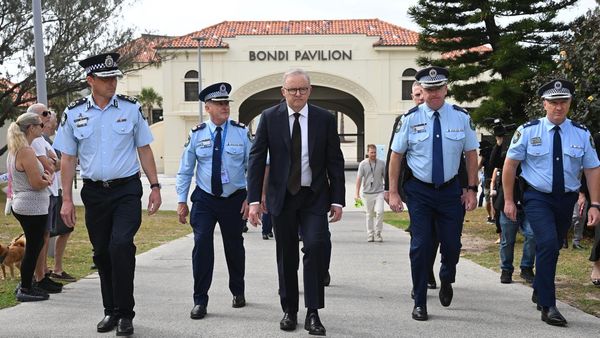
The Indian government has issued a legal notice to halt the “unethical” auction of ancient gem relics, which it said should be treated as the sacred body of the Buddha.
Its Ministry of Culture said the auction of the Piprahwa gems in Hong Kong this week “violates Indian and international laws, as well as United Nations conventions”, and demanded their repatriation to India “for preservation and religious veneration”.
The legal notice has been served on Sotheby’s Hong Kong and Chris Peppé, one of three heirs of William Claxton Peppé, a British colonial landowner who in 1898 excavated the gems on his estate in northern India, who are selling the relics.
The auction, which has prompted an outcry from scholars and monastic leaders, is scheduled for 7 May, and the gems are expected to sell for about HK$100m (£9.7m).
A letter, posted on the Ministry of Culture’s Instagram account, said Peppé, a Los Angeles-based TV director and film editor, lacked the authority to sell the relics. Sotheby’s, by holding the auction, was “participating in continued colonial exploitation”, it added.
The ministry insisted on the immediate cessation of the auction, saying the gem relics “constitute inalienable religious and cultural heritage of India and the global Buddhist community”.
It also called on Sotheby’s and Chris Peppé to issue a public apology to the Indian government and Buddhists worldwide, and for the full disclosure of all provenance documents and any other relics in the possession of William Peppé’s heirs or transferred by them to any other entity or individual.
Failure to comply would result in legal proceedings in Indian and Hong Kong courts and through international bodies “for violations of cultural heritage laws”, the letter warned.
The ministry added that it would launch a public campaign highlighting Sotheby’s role “in perpetuating colonial injustice and becoming a party to [the] unethical sale of religious relics”.
The gems include amethysts, coral, garnets, pearls, rock crystals, shells and gold, either worked into pendants, beads and other ornaments, or in their natural form.
They were originally buried in a dome-shaped funerary monument, called a stupa, in Piprahwa, in present-day Uttar Pradesh, India, between 240BC and 200BC, when they were mixed with some of the cremated remains of the Buddha, who died about 480BC.
The British crown claimed Peppé’s find under the 1878 Indian Treasure Trove Act, and the bones and ash were given to the Buddhist monarch King Chulalongkorn of Siam.
Most of the 1,800 gems went to what is now the Indian Museum in Kolkata. Peppé was permitted to retain approximately a fifth of them, which were described as “duplicates” of some of the others.
On the matter of the gems’ provenance and ownership, the ministry’s letter noted that under the Buddhist religion, materials in sacred funerary mounds are “sacred grave goods … inseparable from the sacred relics and cannot be commodified.
“We beg to note that the relics of the Buddha cannot be treated as ‘specimens’ but as the sacred body and originally interred offerings to the sacred body of the Buddha.”
The ministry added that the sellers, who describe themselves as custodians of the gems, “had no right to alienate or misappropriate the asset … an extraordinary heritage of humanity where custodianship would include not just safe upkeep but also an unflinching sentiment of veneration towards these relics”.
Its letter said the proposed auction “offends the sentiments of over 500 million Buddhists worldwide”, violated ethics and disrupted sacred tradition.
Peppé, who wrote a piece for Sotheby’s about his family’s custodianship of the gems, said: “In light of the Indian government’s sudden interest in the gems, 25% of auction proceeds will be donated to the displaying of the main Kolkata collection of the Piprahwa gems for Buddhists and the larger public to enjoy. Another 25% will be donated to Buddhist institutions.”
With regards to his and his two relatives’ right to sell the gems, he added: “Legally, the ownership is unchallenged.”
Sotheby’s said the auction would proceed as planned. The auction house previously told the Guardian that it had conducted “requisite due diligence”, including in relation to provenance and legality.







